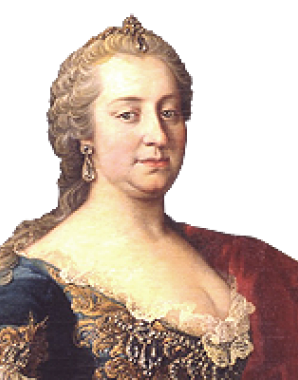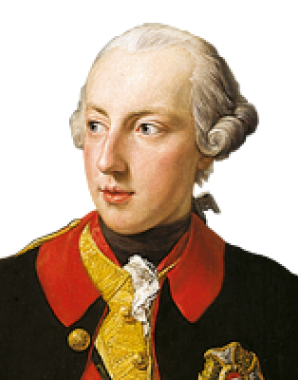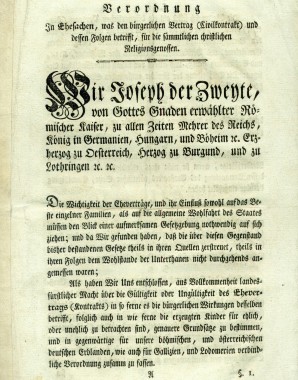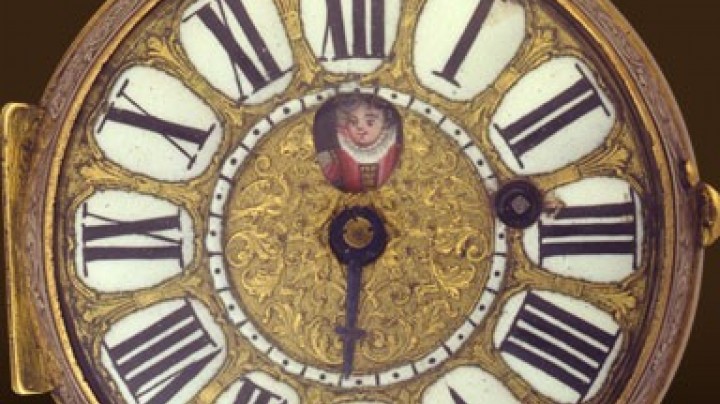Marriage and divorce
With the Patent on Marriage in 1783, marriage became a State concern. In addition to exchange of wedding vows at church, civil marriage now also existed.
‘What God has joined together, let no man put asunder’ – no man, perhaps, but a court of law. The separation between civil and religious matters has existed since the Josephine Patent on Marriage of 1783. In this document religious marriage vows were extended to include status in civil law. This concession to civil rights was due to the Enlightenment movement, whose ideal was to guarantee the equality and liberty of the rational individual. Women, admittedly, were not treated as having equal rights with men. For example, as people in need of protection, married women needed a guardian in the execution of official matters. In the Patent on Marriage, naturally, their spouse was recommended as their guardian. The new law also required the consent of those with parental authority at the marriage of a minor.
The dissolution of a marriage represented a particularly thorny issue between Church and State. Whilst non-Catholics (Jews, Protestants) could be officially divorced, the Catholic Church remained convinced that a marriage before God could not be dissolved.
Admittedly there was now, even for Catholics, the possibility of a judicial separation. After a report had been submitted to the court and confirmation given by the parish priest testifying that no reconciliation was possible in a marriage, a separation of this nature was possible. Both parties had to agree and to present proof that they were leading separate lives. If no agreement could be reached between the two parties about a separation, they had to be able to produce valid reasons in court if they still wished to achieve a dissolution. If the evidence presented were to demonstrate attempted murder, adultery and malicious desertion of the marriage partnership, then the civil court alone could decide on the dissolution of the marriage. However, despite the possibility of judicial separation, the sacramental bond of matrimony between Catholics remained in force.
















